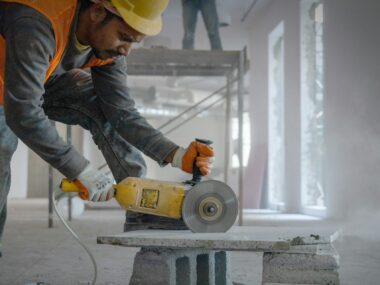Planning a home painting project requires careful consideration of multiple factors that will impact both your immediate experience and long-term satisfaction. The choice between tackling the work yourself or hiring experienced professionals affects your budget, timeline, and final results in significant ways.
Understanding the key differences between DIY painting and professional services empowers you to make an informed decision that aligns with your specific circumstances. Each approach offers distinct advantages and challenges that deserve thorough evaluation before you begin your project.
This comprehensive guide examines the critical factors that will help you determine the best path forward for your painting needs. From cost considerations to quality expectations, we’ll explore everything you need to know to make the right choice for your home.
Understanding the True Cost of Each Approach
DIY Painting Financial Requirements
Starting a DIY painting project involves a substantial upfront investment in materials and equipment. High-quality brushes, rollers, drop cloths, primers, and paints can quickly accumulate significant costs, particularly for larger spaces or whole-house projects.
Many homeowners underestimate the hidden expenses associated with DIY work. Paint calculation errors often result in multiple trips to the store, while unexpected surface preparation needs may require specialized tools or additional materials. These unplanned purchases can inflate your budget considerably beyond initial estimates.
The time investment represents another financial consideration. Hours spent on preparation, painting, and cleanup translate to opportunity costs that should factor into your overall project assessment. Weekend projects frequently extend across multiple weeks, especially when weather conditions affect exterior work.
Professional Service Investment Structure
Professional painter services present a different cost structure that bundles labor, materials, and expertise into a comprehensive package. While the initial investment may appear higher, this approach eliminates the guesswork around material selection and reduces the risk of costly mistakes.
Many professional painting companies provide warranties on their work, adding value that extends beyond immediate project completion. This protection offers peace of mind and potential savings on future touch-ups or repairs that might result from workmanship issues.
Companies like capitalelite.ca offer transparent pricing with detailed estimates that help you understand exactly what you’re paying for. Their comprehensive approach includes all materials, labor, and cleanup, eliminating surprise costs that often accompany DIY projects.
Time Investment and Project Management
DIY Project Timeline Realities
Home painting projects demand considerable time commitments that extend well beyond actual paint application. Surface preparation, including cleaning, sanding, and priming, often consumes more hours than the painting process itself.
The learning curve associated with proper techniques can significantly extend project timelines. First-time painters may require additional hours to master application methods, color coordination, and finishing techniques that experienced professionals execute efficiently.
Weather conditions, particularly for exterior projects, can further complicate DIY scheduling. Limited weekend availability combined with unpredictable weather patterns can stretch simple projects across multiple months.
Professional Efficiency Advantages
Experienced painters bring efficiency developed through years of practice and specialized knowledge. They understand optimal weather conditions, proper surface preparation techniques, and application methods that maximize both speed and quality outcomes.
Professional teams coordinate multiple project aspects simultaneously, creating workflow efficiencies that individual DIY painters cannot match. While one team member prepares surfaces, others begin painting completed areas, significantly reducing overall project duration.
This efficiency translates to minimal disruption to your daily routine. Professional painters can often complete projects that would take homeowners weeks to finish, allowing you to enjoy your refreshed space sooner.
Quality Expectations and Long-term Results
Surface Preparation Excellence
Professional painters understand that paint longevity depends heavily on thorough surface preparation. They possess knowledge of different material requirements, appropriate cleaning methods, and primer selection that ensures optimal paint adhesion and durability.
DIY painting often results in shortcuts during the preparation phases due to time constraints or lack of knowledge. These oversights can lead to premature paint failure, necessitating earlier repainting and ultimately increasing long-term costs.
Proper preparation techniques include filling holes and cracks, sanding rough surfaces, and applying appropriate primers. Each step requires specific knowledge and tools that professionals bring to every project.
Application Technique Mastery
Skilled professionals employ techniques that create smooth, even finishes with minimal brush marks or roller patterns. They understand paint viscosity, application timing, and environmental factors that affect final appearance quality.
Years of experience teach professionals how to handle challenging areas like corners, trim work, and textured surfaces. These skills result in clean lines, even coverage, and professional-looking finishes that enhance your home’s value.
DIY painting often produces visible application marks, uneven coverage, or color variations that detract from overall aesthetic appeal. While these issues may not affect functionality, they can impact visual satisfaction and property value enhancement potential.
Safety Considerations and Risk Management
Equipment and Height Safety
Painting projects frequently involve working at heights, using ladders, and handling potentially hazardous materials. Professional painters possess proper safety equipment and training to manage these risks effectively while maintaining comprehensive insurance coverage.
DIY painters may lack appropriate safety equipment or experience working at heights safely. The risk of falls, injuries, or property damage increases significantly when proper safety protocols are not followed or understood.
Professional painters also understand electrical safety around outlets and fixtures, proper ventilation requirements, and safe chemical handling procedures that protect both workers and occupants.
Insurance and Liability Protection
Professional painting services carry comprehensive insurance that protects both their workers and your property. This coverage includes liability insurance for potential damages and workers’ compensation for job-related injuries.
DIY projects leave homeowners responsible for any accidents or property damage that occur during the work. Medical costs, property repairs, or legal issues resulting from DIY mishaps can far exceed the cost of professional services.
Companies like capitalelite.ca maintain $5 million liability insurance and full workers’ safety coverage, providing complete protection for your property and peace of mind throughout the project.
Material Selection and Quality Considerations
Paint and Supply Quality
Professional painters have access to commercial-grade paints and materials that often provide superior coverage, durability, and finish quality compared to consumer-grade alternatives. These products are specifically formulated for professional application and long-term performance.
Professionals understand which paint types work best for specific surfaces and conditions. They can recommend appropriate primers, paints, and finishes that maximize durability and appearance while staying within your budget parameters.
DIY painters may struggle with the vast array of paint options available, potentially selecting products that don’t meet their specific needs or provide optimal results for their particular project requirements.
Tool and Equipment Access
Professional painters invest in high-quality tools and equipment that produce superior results compared to consumer-grade alternatives. Spray equipment, professional brushes, and specialized applicators create finishes that are difficult to achieve with standard DIY tools.
Purchasing professional-grade equipment for a single project is often cost-prohibitive for homeowners. Rental options exist but require additional time and effort to locate, transport, and learn to operate properly.
Essential painting tips include investing in quality brushes and rollers, even for DIY projects, as these tools significantly impact final results. However, professional-grade equipment remains the standard for achieving consistently excellent outcomes.
Project Complexity Assessment
Simple vs. Complex Projects
Interior rooms with minimal trim work and standard wall surfaces may be suitable for experienced DIY painters. These projects offer opportunities to develop skills while working on manageable spaces with lower stakes for mistakes.
Complex projects involving multiple colors, intricate trim work, high ceilings, or specialty finishes benefit significantly from professional expertise. These situations require advanced techniques, specialized tools, and experience that comes from years of practice.
Exterior painting projects typically present greater challenges due to weather considerations, height requirements, and surface preparation complexity. Multiple-story homes or buildings with extensive architectural details often exceed typical DIY capabilities.
Specialized Techniques and Finishes
Certain painting techniques require specific training and experience to execute properly. Spray painting, texture application, and decorative finishes demand professional knowledge to achieve satisfactory results.
Color coordination and paint selection become more complex in projects involving multiple rooms or exterior color schemes. Professionals bring design expertise that helps create cohesive, attractive color combinations that enhance your home’s overall appeal.
Repair work often accompanies painting projects, including drywall patching, wood repair, or surface restoration. These skills require additional expertise beyond basic painting knowledge and may necessitate professional involvement.
Making Your Decision: Key Evaluation Factors
Skill Level and Experience Assessment
Honest evaluation of your painting abilities is crucial for making the right choice. Consider your previous project successes, comfort with tools and techniques, and available time for proper execution.
Remember that painting skills develop over time through practice and experience. Complex or high-visibility projects may not provide ideal learning opportunities if mistakes are costly or difficult to correct.
Previous experience with similar projects provides valuable insight into your capabilities. However, scaling up from small rooms to large spaces or exterior work introduces new challenges that require additional consideration.
Budget and Value Considerations
Compare the total cost of DIY materials, tools, and time investment against professional service quotes. Remember to factor in potential mistakes, material waste, and the opportunity cost of your time.
Professional services often provide better long-term value through superior materials, proper application techniques, and warranty coverage. These factors can result in longer-lasting results that reduce future maintenance costs.
Consider the value of your time and the satisfaction you derive from DIY projects. Some homeowners find painting relaxing and enjoyable, while others prefer to focus their energy on other activities or responsibilities.
Moving Forward with Confidence
The decision between DIY painting and professional services ultimately depends on your specific circumstances, skill level, and project requirements. Both approaches have merit when matched appropriately to the situation and homeowner preferences.
Consider starting with smaller, less complex projects to develop your skills before tackling major painting endeavors. This approach allows you to gain experience while minimizing the risk of costly mistakes in high-visibility areas.
For projects requiring professional expertise, quality results, and time efficiency, consulting with experienced contractors provides valuable insights into project requirements and expected outcomes. Professional painters offer the knowledge, tools, and experience necessary to achieve exceptional results that enhance your property’s beauty and value.
Whether you choose the DIY path or professional services, proper planning, quality materials, and attention to detail remain essential for successful painting projects that provide lasting satisfaction and enhanced home value.






